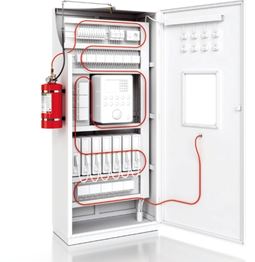Introduction:
In the furniture production sector, where materials and procedures naturally provide a risk of fire, fire safety is crucial. Adopting efficient fire safety procedures guarantees regulatory compliance, maintains business operations, and safeguards personnel and property.
Key Strategies for Fire Safety:
Advanced Fire Detection Systems:
Modern fire detection systems, like heat, flame, and smoke detectors, must be installed to identify fires early. For best performance, these systems need to be linked and maintained regularly.
Installation of Fire Hydrant and Sprinkler System:
Make sure that fire hydrants are positioned thoughtfully throughout the building so that, in the event of a fire, water can be obtained quickly. To make sure hydrants are working, routine maintenance and inspections are essential.
Fire Suppression Systems:
Quick fire containment depends on the deployment of suitable fire suppression systems, such as gas-based suppression systems, foam suppression systems, or sprinklers. Safety is improved by designing suppression systems to meet the unique requirements of furniture production processes.
Safe Material Handling:
Preventing fires requires the careful handling and storage of combustible items like wood, textiles, and adhesives. It is essential to separate combustible materials from sources of possible ignition and to put in place sufficient ventilation systems.
Electrical Safety Measures:
It is possible to detect and address possible fire threats by regularly inspecting electrical systems and equipment. Risks can be reduced by using explosion-proof electrical fittings and equipment in locations where combustible materials are present.
Extensive Employee Training:
It is crucial to give staff members extensive training on fire safety regulations, emergency evacuation techniques, and the proper use of fire extinguishers. Regularly holding drills builds readiness and improves reaction times.
Workplace Housekeeping:
Keeping a workspace tidy and orderly considerably lowers the risk of fire. The risk of fire occurrences is reduced by routinely clearing work locations, equipment, and other combustible objects of dust and debris.
Carrying Out Risk Assessments:
Carrying out thorough risk assessments makes it possible to recognize possible fire threats and put appropriate control measures in place. Ongoing fire safety preparation is ensured by the regular examination and updating of risk assessments.
Observance of Regulations:
It’s essential to keep up with the latest fire safety laws, rules, and guidelines that apply to the furniture manufacturing industry. Respecting legal regulations helps the organization develop a culture of safety and compliance.
Scheduled Equipment Inspections and Maintenance:
To guarantee the correct operation of fire safety equipment, such as suppression systems, fire extinguishers, and alarms, periodic inspections and maintenance are necessary. Proactive maintenance facilitates quick problem-solving.
Effective Emergency Planning:
A coordinated response to fire situations is ensured by creating and routinely revising emergency response plans in conjunction with local fire authorities. Workers need to know the assembly locations, emergency contacts, and evacuation routes.
Conclusion
In conclusion, fire safety must be given top priority in the furniture production process, particularly since furniture is classified as having a Class A fire danger. Within manufacturing operations, it is essential to prioritize water-based fire safety measures in compliance with Indian government rules and regulations. Fire hydrants, sprinkler systems, and water-based fire extinguishers are important tools in the fight against fires in furniture manufacturing facilities. As required by Indian rules, these systems are integral parts of a comprehensive fire safety infrastructure. Furniture producers can become far more fire-safe by following these rules and using water-based fire safety devices including sprinkler systems, fire hydrants, and water-based extinguishers. In addition to ensuring adherence to legal requirements, this proactive strategy safeguards important assets and promotes a safer work environment for staff members.







